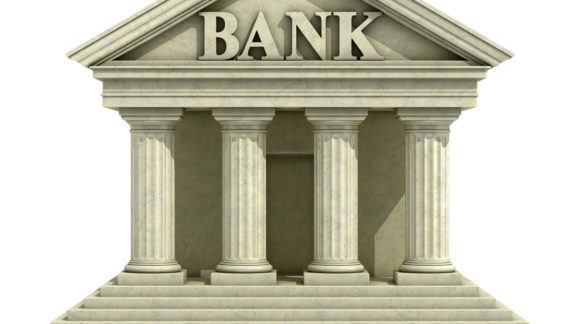How to Find Out if Your Bank is Safety Rated Before You Become a Depositor

Is Your Bank Safe?
In recent years, it seems that financial institutions are struggling. Depositors are concerned about their savings and asking whether or not their bank is safe.
While the Federal Deposit Insurance Corporation keeps a secret “watch list” for banks, Bankrate.com, a popular online financial resource, uses a public system that measures the stability and safety of U.S. commercial banks and credit unions. Review the Safe & Sound Bank Ratings at Bankrate.com to learn your financial institution’s rating.
How the Bank Risks Your Capital
When a bank approves a large loan for a customer, the cash for that loan comes from the depositors—everyday people who deposit their savings and monthly paychecks at that bank. While it might be advantageous to borrow money from a bank with a low interest rate, it is likely not as advantageous to deposit money at that bank, as it is lending out the cash that you deposit on a regular basis.
According to Simon Black, founder of Sovereign Man and international investor, very little of depositors’ funds are kept in the reserve. To prevent losing your money, major financial institutions are required to have resolution plans that ensure the investments of the bank will not put depositors at risk.
To help protect the depositor, one of the jobs of The Federal Deposit Insurance Corporation and the Federal Reserve Board is to identify weaknesses in resolution plans at major banks. For example, Bank of America, JP Morgan Chase and Wells Fargo, when the findings revealed that the plans “would not facilitate an orderly resolution under the U.S. Bankruptcy Code.”
The Federal Deposit Insurance Corporation and the Federal Reserve Board require regular liquidity test of financial institutions. Each bank’s individual plan must submit their improved resolution plans and must address all shortcomings identified in the following areas:
- Capital
- Liquidity
- Governance mechanisms
- Operational capabilities
- Legal entity rationalization
- Derivatives and trading activities
- Responsiveness
Read more about the resolution plan assessment, which is updated regularly by the Board of Governors of the Federal Reserve System and Federal Deposit Insurance Corporation.
About the Dodd-Frank Act
The Dodd-Frank Wall Street Reform and Consumer Protection Act, referred to as the Dodd-Frank Act, helps to ensure a financial institution’s failure will not adversely affect the financial stability of the United States. The resolution plan process ensures that weaknesses are (1) identified and (2) properly resolved.
To date, the following progress has been made as a result of the Dodd-Frank Act:
- Financial institutions and affiliates are in compliance with the International Swaps and Derivatives Association (ISDA) 2015 Universal Resolution Stay Protocol. Financial institutions have secured a substantial amount of long-term debt, which would be used to absorb losses in a bankruptcy proceeding.
- The firms have taken steps to ensure that, in the event of a dissolution, affiliate companies can still use the resources of the failed company, helping to ensure that failure of one subsidiary will not spark a failure of many.
If you’re concerned about securing your funds at a bank, consider investing in alternative methods (gold, for example).
Additional Resources
- Is Your Bank Safe, by bankrate.com
- Safe Internet Banking, by fdic.gov
- How to Tell if Your Bank is Safe or in Trouble, by thebalance.com
- Is Your Money Safe at the Bank, by pbs.newshour.org
- Is My Bank Safe, by Kiplinger.com
- Get out of Big Banks Now, by popularresistance.org
- Putting You at Risk, How Safe is Your Bank, by thesun.co.uk
- The Five Countries with the Safest Offshore Banks, by Andrew Henderson
- How to Know if a Bank is Safe, by cashmoneylife.com
- How Do I Know My Bank is Safe, by applebank.com
- The World’s 50 Safest Banks 2016, by Global Finance
- The Director’s Book, by Office of the Comptroller of the Currency
Videos
- Is Your Bank Safe, by Money Talks News
- FDIC Doesn’t Have Money to Cover Bank Collapse, by Mary Greeley
- Money is Not Safe in the Big Banks, by GlobalResearchTV
Education
- Banking Supervision, by federalreserveeducation.org
Books
- Safe to Fail, by T. Huertas
- Bank to the Future, by Simon Dixon
- Becoming Your Own Banker, by R. Nelson Nash
- Don’t Bank on It, by Craig R. Smith and Lowell Ponte
- Time to Bail Out, by Richard J. Maybury
Apps
- SAFE Credit Union Mobile Banking, by SAFE Credit Union, available on iTunes for free
- Safe 1 Mobile Banking, by Safe 1 Credit Union, available on iTunes for free
- ICBA, by Independent Community Bankers of America, available for free on iTunes
